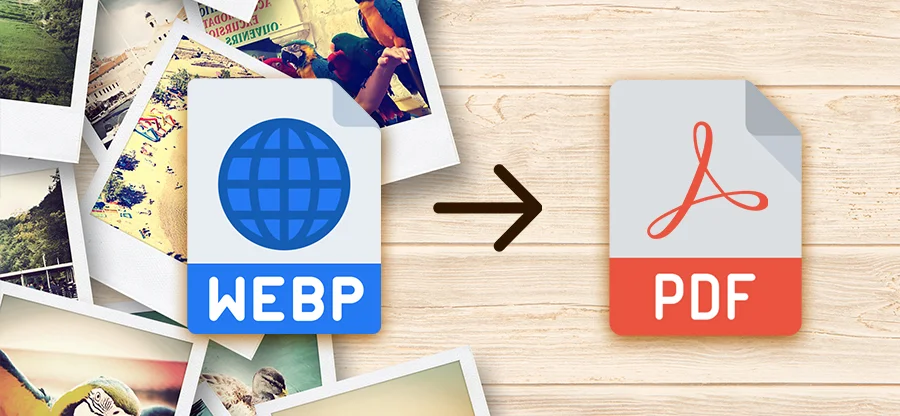Read time: 6 minutes
XML (Extensible Markup Language) files for online business streamline the exchange of information in structured manner , but it stores data as tags & text viable for documentations. The issue arises with XML files when you need to share the data for a presentation or collaboration. It anyhow depends on your preference with the company data utilization. But if you want to share data in better formatting to improve business reach then XML format is not suitable.
“Understand the concept below”
Basically, to make your XML file data visually available, secure & easily accessible, then it’s better to convert XML to PDF. PDF is a far more convenient file format to store & share your business data. It offers better formatting, visual representation, easy accessibility, device support, etc., compared to XML files.
However, to proceed with the switch from XML file to PDF file format, the use of reliable methods is necessary. Yet searching for the right methods is a hectic process, but you can find the best solution for XML to PDF conversion below.
What are the Limitations with XML File?
Initially, XML file provides several benefits to online businesses such as to store and transfer well-structured data. Even though it carries some limitation that prohibits the file shareability. Find the limitations mentioned below:
- Large & redundant data file: XML files store your business data in tags but unlike JSON, XML file syntax is more verbose. There are many words stored in a repetitive format that makes the data file very large and redundant.
- Slow process: Accessibility of XML file data is very slow compared to any other file format as it needs to parse all the tags of XML file. This process makes the XML file slower and more complicated than others.
- Database accessibility: XML file helps to store data in the database, but it is very difficult to access any specific file from the database XML file. It is easier to access it after converting it into a different file format that supports database efficiently.
- Text oriented format: The functionality of XML files mainly focuses on text-centric data which is stored in a well-structured manner and is easy to share. But it is not possible to add any binary data such as video, audio & images in XML file due to limitations in support.
Key Reasons to Convert XML to PDF
The visual appearance of XML file is not appealing as compared to a PDF file which includes both images and videos. XML file being the text-oriented file format, the conversion of XML to PDF helps to improve the raw data as high visualized data. There are various causes to save XML as PDF mentioned below:
- Appearance: Data stored in XML files is well structured but is not presentable in terms of shareability. So, when you convert it to PDF file, it makes the XML file data more appealing & easier to communicate.
- Platform compatibility: The sharing capability of PDF files is very high as compared to XML files as PDF is accessible on multiple devices. Any device or platform equipped with PDF reader functionality can open and view the PDF file data.
- Easy-to-share: In the comparison of sharing capability between XML and PDF, it is obvious that PDF file is more convenient to share. This is because a PDF file offers easy to view option and is platform independent.
- Password protection: PDF file encryption is also an exceptional feature that allows you to protect your PDF file with a password. This feature secures crucial data from unwanted exposure or security breach.
- Feasibility to print: XML files require a specific platform to read out structured data and do not allow printing. But a PDF file carries an attractive design and layout that makes it easy to print-out without any prior change.
Best Manual Methods to Convert XML to PDF
There are multiple XML to PDF converter solutions that help you with easy conversion manually.
Method 1. Text Editor (Notepad) to Save XML as PDF
Step 1. Open your XML file in the Notepad.
Step 2. Click on File>Print and choose Microsoft Print to PDF, then click on Print.
Step 3. Now, in the Save Print Output As tab, select your preferred location to save the PDF file. Also, provide the specific name and then click on Save.
Method 2. Use OpenOffice Writer Component of Apache OpenOffice
Step 1. Launch the OpenOffice Writer component.
Step 2. Open your XML file and configure it with the required formatting.
Step 3. Now, go to File and click on Export as PDF option.
Step 4. Choose the destination and click on Save.
Method 3. Use WordPad to Export XML to PDF
Step 1. Locate your XML file and open it in WordPad.
Step 2. Go to File and click on Print.
Step 3. Now, choose the Microsoft Print to PDF option and provide a specific location to save the PDF file.
Step 4. Click on Save.
Method 4. Try Free XML to PDF Converters Online
Apart from the manual approaches, there are multiple software available online that can help you with XML to PDF conversion. You can try the free online tools such as:
- Zamzar
- Convertio
- FreeFileConvert
- Online-Convert
Note: The above-mentioned tools are mentioned as per their basic capabilities to switch XML file format to PDF. However, the choice and execution are fully dependent on your preference and type of XML file.
Cons of Using Manual Methods or Free Tools to Save XML as a PDF
Utilization of manual & free methods is indeed beneficial for your conversion but there are some repercussions. It’s better to know about all the demerits of using these approaches as described below:
- Size limits: The major issue in using manual & free softwares is the size restrictions which vary in different approaches. Different tools put diverse XML file size limit to upload and convert.
- Security: Free utilities and solutions may provide better results, but it also carries the risk factor for data loss. These solutions do not ensure data security and if any conversion fails, it can lead to complete data loss.
- Low on features: Compared to automated paid solutions, free XML to PDF converters come with limited features to configure your conversion process.
Wrap Up!
In the above article, we have provided a collective discussion over the XML to PDF file conversion. The discussion comprises of XML file limitations, reasons, and the best possible methods to convert XML file to PDF. However, we also advise you to assess all the demerits of using the suggested methods.
In the discussion of conversion to PDF, another common practice is to convert EML file to PDF with attachments. Get all your insights and follow the approaches carefully for precise conversion.
Frequently Asked Questions
A. The conversion of XML file to PDF is achievable with the help of various manual methods such Notepad and WordPad. Also, you can try some of the online available free tools such as PDFFiller, PDF Candy, novaPDF, etc. It depends on your requirement and XML file size to choose appropriate tool.
A. Open the XML file in Notepad or WordPad, where you can import the XML file and go to File>Print option. So, when you select Print to PDF option, then you can view your XML file as PDF.







